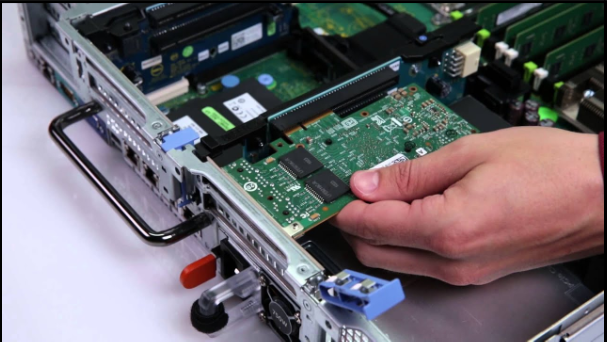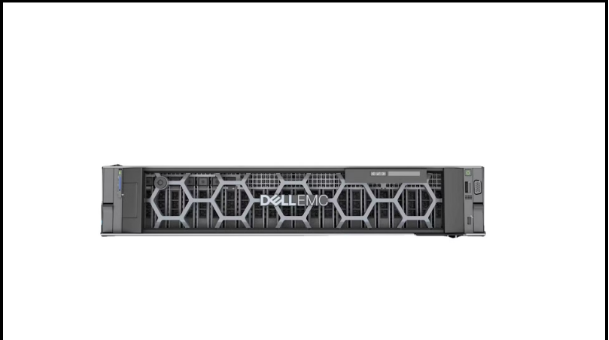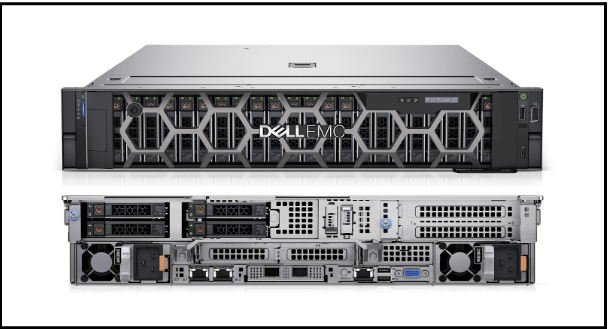GENERAL
Best Tips for Maintaining and Upgrading Dell Server Memory

Dell servers are known for their reliability and performance, but proper memory maintenance and timely upgrades are essential to keep them running smoothly. Whether you’re managing a business server or a data center, optimizing Dell server memory can improve speed, efficiency, and overall system stability. Here are some of the best tips for maintaining and upgrading your server’s memory.
1. Regularly Monitor Memory Usage
Before making any upgrades, it’s important to monitor how your Dell server is using memory. Use built-in tools like Dell OpenManage, Windows Task Manager, or Linux commands to check for high memory usage. If your server frequently hits its memory limit, an upgrade might be necessary. Additionally, consider setting up monitoring alerts to proactively identify memory constraints before they impact performance.
A well-monitored server can help prevent unexpected downtime and ensure optimal utilization of available resources. Understanding your server’s workload trends can also help in making informed decisions about when and how much memory to upgrade.
2. Keep the Server Environment Clean and Cool
Dust and overheating can impact your server’s performance, including its memory modules. Ensure your server is placed in a cool, dust-free environment with proper airflow. Regularly clean vents and fans to prevent overheating, which can cause memory errors or system crashes.
Overheating can lead to throttling, reduced performance, and even permanent damage to components. Consider investing in rack-mounted cooling solutions, server room air conditioning, or even liquid cooling systems if your data center experiences high temperatures.
3. Use Compatible and Certified Memory Modules
When upgrading your Dell server’s memory, always choose Dell-certified RAM or modules from trusted brands that meet Dell’s specifications. Incompatible memory can lead to system instability or failure to boot. Check your server model’s manual to find the supported RAM types and configurations.
Using certified memory ensures reliability and compatibility, reducing the risk of hardware failures or voiding warranties. Dell PowerEdge servers, for instance, have specific memory speed, voltage, and capacity requirements that should be met to avoid performance degradation.
4. Follow Proper Installation Procedures
Installing new memory incorrectly can lead to hardware damage or performance issues. Follow these steps:
- Power off the server and unplug it.
- Use anti-static precautions (wear an anti-static wrist strap).
- Insert RAM sticks into the correct slots, following Dell’s recommended slot configuration for best performance (e.g., filling slots in pairs for dual-channel memory).
- Secure modules properly to avoid loose connections.
- Power on and verify the new memory is recognized in BIOS.
If you are upgrading multiple servers in a data center, having a standardized installation procedure and keeping track of memory configurations can help streamline the process.
5. Update BIOS and Firmware
Outdated BIOS or firmware can cause compatibility issues with newly installed RAM. Regularly update your Dell PowerEdge server’s BIOS and firmware through Dell’s official support site to ensure stability and optimal performance.
Keeping your BIOS and firmware up to date can also enhance security, as updates often include important patches for vulnerabilities that could be exploited by attackers.

6. Enable Error-Correcting Code (ECC) Memory
Most Dell servers support ECC RAM, which detects and corrects memory errors automatically. If your server is running mission-critical applications, enabling ECC can help prevent crashes and data corruption.
ECC memory is especially useful in environments where data integrity is crucial, such as financial institutions, healthcare, and enterprise-level data centers.
7. Optimize Virtual Memory Settings
If upgrading physical RAM isn’t immediately possible, optimize your virtual memory settings to improve performance. Adjust the page file size in Windows or swap space in Linux to reduce memory bottlenecks.
While virtual memory cannot fully replace physical RAM, properly tuning these settings can help manage workloads more effectively, especially on servers with limited memory capacity.
8. Perform Routine Memory Tests
Regularly run diagnostic tests to check for failing memory modules. Use Dell’s Pre-boot System Assessment (PSA) or third-party tools like MemTest86 to identify faulty RAM early and replace it before it affects performance.
Faulty memory can cause random system crashes, application errors, and data corruption. Scheduling routine memory tests can help maintain system stability and prevent unexpected failures.
9. Plan for Future Expansion
As your business grows, your server’s memory demands will increase. When considering Dell memory upgrades, think ahead about your future requirements. Opt for scalable configurations that allow for easy expansion without replacing the entire system.
For example, if your workload is expected to increase over time, consider purchasing higher-capacity RAM modules upfront to avoid replacing existing ones later. Additionally, having a structured upgrade plan can minimize downtime and ensure a smooth transition.
10. Consider Cloud or Hybrid Solutions
If your workload fluctuates significantly, consider integrating cloud-based memory solutions with your on-premises Dell servers. Hybrid cloud solutions can help balance memory usage and optimize performance without requiring excessive hardware investments.
11. Train IT Staff on Memory Management
Ensuring that your IT team understands the best practices for memory maintenance and upgrades can prevent common mistakes and improve efficiency. Regular training sessions and documentation of upgrade procedures can make server management more effective.

Final Thoughts
Maintaining and upgrading server memory doesn’t have to be complicated. By regularly monitoring memory usage, ensuring a clean environment, using compatible RAM, and following proper installation procedures, you can keep your server running at peak performance. If your server starts slowing down or struggling with workloads, consider upgrading its memory for a smooth and efficient operation.
Additionally, staying proactive with firmware updates, ECC memory, and structured upgrade plans can help maintain stability and reduce the risk of system failures. Investing in cloud integrations and IT training can also enhance your overall memory management strategy.
By following these best practices, you can extend the lifespan of your Dell server and maximize its efficiency. For high-quality server memory solutions, consider trusted providers like Cloud Ninjas, which offer reliable and certified Dell server upgrades to keep your system performing at its best.
GENERAL
8 In-Demand Coding Languages You Can Learn in 2025

The digital realm is in constant evolution, and staying ahead requires mastering the right tools. In 2025, coding proficiency will be more crucial than ever, with certain languages dominating the tech landscape. To navigate this dynamic environment, understanding which languages are in high demand is essential. This blog will delve into eight pivotal coding languages projected to be highly sought after in 2025, exploring their applications, career prospects, and why they deserve your attention.
The digital transformation across industries has fueled a surge in demand for professionals proficient in in-demand coding languages. As businesses increasingly rely on software and data-driven solutions, the need for skilled developers in languages like Python, JavaScript, and Java is paramount. This demand extends to specialized areas like AI and cybersecurity, where expertise in languages like R and Go is crucial.
Coding programming bootcamp offers an accelerated path to acquire these vital skills. These intensive programs focus on practical application, providing hands-on experience through projects and real-world scenarios. By compressing years of learning into months, bootcamps equip individuals with the necessary proficiency to enter the tech industry quickly, bridging the skill gap and meeting the growing demand for qualified coding professionals.
What is coding?
Coding is the process of writing instructions for computers to execute specific tasks. It involves using programming languages, like Python or JavaScript, to create software, websites, and applications. Coders translate human-readable instructions into machine-understandable code, enabling computers to perform diverse functions. It’s a fundamental skill in the digital age, driving innovation and shaping technology. Coding combines logic, problem-solving, and creativity to build digital solutions.
Top 8 In-demand Coding Languages to Learn in 2025
Python: Renowned for its clear syntax and extensive libraries, Python excels in web development, data science, AI, and automation. Its versatility and readability make it a favorite for both beginners and experienced developers, driving innovation across various domains. It simplifies complex tasks with its robust frameworks and libraries.
JavaScript: The backbone of interactive web experiences, JavaScript powers dynamic websites and user interfaces. Its use extends to server-side development (Node.js) and mobile app creation (React Native). Its ability to create responsive and engaging web applications makes it indispensable for front-end developers, enhancing user engagement.
Java: A platform-independent language, Java is crucial for enterprise-level applications, Android development, and large-scale systems. Its robustness and scalability make it suitable for complex projects demanding stability and reliability. It’s a key player in building secure and efficient software solutions.
C: A low-level language providing direct memory manipulation, C is essential for operating systems, embedded systems, and performance-critical applications. Its efficiency and control make it vital for system-level programming and resource-constrained environments. It demands precision and understanding of hardware interactions.
C++: An extension of C, C++ adds object-oriented features, making it ideal for game development, high-performance computing, and complex system software. Its speed and flexibility empower developers to create highly optimized and efficient applications. It’s widely used in areas demanding maximum performance.
C#: Developed by Microsoft, C# is used in Windows applications, game development (Unity), and web development (ASP.NET). Its integration with the .NET framework enables developers to build powerful and scalable enterprise solutions. It’s a robust language for creating sophisticated software.
SQL: Structured Query Language is crucial for managing and manipulating databases. It enables efficient data retrieval, manipulation, and analysis. Its role in data-driven applications makes it indispensable for database administrators and data analysts. It is essential for managing relational databases.
PHP: Primarily used for back-end web development, PHP powers dynamic websites and web applications. Its integration with HTML and database systems simplifies server-side scripting and web application development. Its wide adoption in content management systems like WordPress makes it a significant player in web development.
How to learn the In-demand coding languages?
Learning in-demand coding languages requires a structured approach and consistent effort. Here’s a breakdown of effective methods:
- Define Your Goals: Start by identifying your career aspirations. Do you want to build websites, analyze data, or develop mobile apps? This will help you choose the most relevant languages. For web development, focus on JavaScript, HTML, and CSS. For data science, Python and R are essential.
- Online Resources: Leverage the abundance of online resources.
- Coding Bootcamps: For accelerated learning, consider coding bootcamps. These intensive programs condense months of learning into weeks, focusing on practical skills and real-world projects. They provide a structured curriculum, mentorship, and career support, ideal for those seeking a rapid career transition.
- Practice Consistently: Coding is a practical skill. Regular practice is crucial. Start with small projects and gradually increase complexity. Build personal projects to apply your knowledge and create a portfolio. Participate in coding challenges and contribute to open-source projects to gain experience and network.
- Build a Strong Foundation: Understand the fundamental concepts of programming, such as data structures, algorithms, and object-oriented programming. This foundation will make it easier to learn new languages and technologies.
- Join Coding Communities: Engage with online forums, communities like Stack Overflow, and local meetups. Networking with other coders provides support, insights, and opportunities for collaboration.
- Specialize and Stay Updated: The tech industry evolves rapidly. Stay updated on new frameworks, libraries, and best practices. Specialize in a niche area to increase your expertise and marketability. Continuous learning is essential for a successful coding career.
Conclusion
Mastering these eight in-demand coding languages will significantly enhance your career prospects in the tech industry. However, efficiently acquiring proficiency in multiple languages can be challenging. A tech bootcamp offers a streamlined solution. These intensive programs provide focused training across various languages, emphasizing practical application and real-world projects. They compress years of learning into a few months, equipping you with the diverse skillset employers seek. Bootcamps bridge the gap between theoretical knowledge and practical expertise, enabling you to confidently pursue coding roles and navigate the evolving tech landscape. They offer a fast-track to proficiency.
GENERAL
Bbai Stock: Unlocking the Potential of BigBear.ai Shares

Artificial intelligence is transforming industries at breakneck speed, and investors are eager to capitalize on the next big winner. Among the names on many radars is BigBear.ai, whose publicly traded shares are known as bbai stock. In this in-depth guide, we’ll explore everything you need to know about bbai stocks—from its origins and market performance to the factors that could drive its future growth.
Understanding bbai Stock and Its Role in AI
bbai stock represents ownership in BigBear.ai Holdings, a company specializing in decision intelligence and advanced analytics powered by AI. BigBear.ai’s solutions help organizations ingest, process, and visualize large datasets, enabling predictive insights across defense, intelligence, and commercial sectors. By owning bbai stocks, investors gain exposure to a firm at the intersection of big data and machine learning.
The Evolution of bbai Stock: Company Background
BigBear.ai emerged through a series of strategic mergers and acquisitions aimed at consolidating best-in-class analytics technologies. Listed on the New York Stock Exchange under the ticker “BBAI,” the company has steadily expanded its footprint since going public. Its core offerings include autonomous data pipelines, AI-driven modeling platforms, and real-time decision support systems—all of which underpin the value proposition of bbai stocks.
Recent Trends in bbai Stock Performance
Quarter Highlights of bbai Stock
Over the last four quarters, bbai stock has exhibited both spikes and pullbacks. New government contracts and expanded commercial partnerships led to notable share price increases, while broader market corrections and shifts in investor sentiment contributed to occasional declines. Monitoring these quarterly reports is crucial for anyone tracking bbai stocks trajectory.
Market Response to bbai Stock Announcements
Each major announcement—from contract awards to product launches—tends to produce immediate volatility in bbai stock. For example, when BigBear.ai secured a multi-year defense contract in Q2 2024, shares jumped by over 15%. Conversely, industry-wide tech sell-offs have occasionally eroded gains, underscoring bbai stocks sensitivity to macroeconomic trends.
Why Investors Are Eyeing bbai Stock
Technological Edge Driving bbai Stock Interest
BigBear.ai’s proprietary AI algorithms and modular software architecture distinguish it from competitors. This technological edge has fueled interest in bbai stocks, as the company can rapidly deploy solutions across diverse applications—from logistics optimization to predictive maintenance.
Strategic Alliances Boosting bbai Stock Prospects
Partnerships with cloud providers and systems integrators have broadened BigBear.ai’s distribution channels. Such alliances not only enhance product reach but also add credibility—key reasons why many investors keep bbai stocks on their watchlists.
Potential Headwinds for bbai Stock
Competition Facing bbai Stocks
The AI analytics space is crowded, with major players like Palantir Technologies, IBM, and startups vying for market share. This competition poses a risk for investors considering bbai stocks, as pricing pressure and feature parity could emerge.
Financial Metrics Influencing bbai Stocks
While revenue growth has been robust, BigBear.ai’s profitability metrics remain in the investment phase. Cash burn and operating expenses could weigh on the share price if not offset by accelerating bookings—an important consideration for anyone evaluating bbai stock.
Expert Opinions on bbai Stocks Outlook
Financial analysts offer a mixed outlook on bbai stock. Bulls highlight BigBear.ai’s unique niche in defense analytics and its growing commercial pipeline, suggesting the current valuation underestimates future earnings. Bears, however, point to the need for sustained profitability and greater client diversification before bbai stocks can deliver long-term alpha.
Should You Consider bbai Stock for Your Portfolio?
Investing in bbai stock may suit those with a higher risk tolerance and a bullish view on artificial intelligence adoption. The company’s government ties provide revenue stability, while its scalable platform promises growth across sectors. However, prudent investors should balance bbai stocks with other assets to mitigate volatility inherent in emerging tech firms.
Conclusion:
As AI continues to permeate every corner of the economy, BigBear.ai stands as a compelling option for investors seeking targeted exposure to decision intelligence. bbai stock offers a front-row seat to innovation but comes with the typical risks of small-cap tech equities. By staying informed on contract developments, financial results, and industry trends, investors can make educated decisions about integrating bbai stocks into their portfolios.
GENERAL
Driving the Future: How Data Science, AI, and EV Education are Powering Innovation

In today’s rapidly evolving digital world, technological innovation is reshaping industries and redefining how businesses operate. Among the most transformative forces are data science and artificial intelligence, which are not only streamlining operations but also uncovering new business opportunities. Simultaneously, the global push for sustainability has accelerated the adoption of electric vehicles (EVs), creating a growing demand for talent skilled in EV technology and infrastructure. This convergence of advanced tech and green innovation signals an exciting future, especially for those willing to skill up through specialized courses like AI programs and EV course offerings.
The Power of Data Science and Artificial Intelligence
At the core of digital transformation lies data science and artificial intelligence. Data science allows organizations to extract actionable insights from massive datasets, while AI leverages those insights to simulate human intelligence in machines — enabling automation, prediction, and personalization on an unprecedented scale.
From personalized recommendations on streaming platforms to fraud detection in banking, these technologies are already deeply embedded in our daily lives. Businesses are increasingly recognizing the power of these tools to reduce costs, improve customer experience, and gain a competitive edge.
Moreover, the synergy between data science and AI has led to remarkable advances in fields such as healthcare, supply chain, finance, and education. Predictive analytics is helping doctors make quicker, more accurate diagnoses. Logistics companies are optimizing delivery routes in real-time. And educational institutions are customizing learning paths based on student behavior and progress.
The applications are virtually limitless — and growing.
AI for Business: Unlocking Smarter Decision-Making
Incorporating ai for businessai for business is no longer a futuristic concept — it’s a necessity. Businesses today are leveraging AI not just for automation but for enhancing decision-making processes, forecasting trends, and personalizing customer engagement.
Take customer service, for instance. AI-powered chatbots now handle a vast volume of customer inquiries with accuracy and speed, freeing up human agents for more complex queries. In marketing, AI tools analyze consumer behavior and generate tailored campaigns that resonate more deeply with target audiences. Even in HR, AI is helping organizations identify the best candidates through intelligent resume screening and predictive hiring models.
Beyond operations, strategic AI implementation enables businesses to analyze market data and identify emerging opportunities, helping leaders make informed decisions swiftly. For small- and medium-sized enterprises (SMEs), this levels the playing field by providing access to insights and capabilities that were previously exclusive to large corporations with significant R&D budgets.
The integration of AI across business functions signals a clear shift: data is the new oil, and AI is the engine driving growth.
Preparing for a Sustainable Future: The Rise of the EV Industry
While AI and data are revolutionizing business, another crucial shift is happening on the roads. The global push toward sustainable transportation has made electric vehicles (EVs) a cornerstone of the green revolution. With governments offering incentives, manufacturers expanding EV lines, and consumers showing growing interest, the EV industry is poised for exponential growth.
However, this surge demands a skilled workforce — and that’s where an ev course becomes crucial.
EVs are not just about replacing gasoline with electricity. They encompass an entire ecosystem: battery technology, charging infrastructure, power electronics, energy management, and more. Professionals with specialized knowledge in these areas are in high demand, from automotive engineers and energy consultants to data analysts focused on EV efficiency and sustainability metrics.
Pursuing an ev course equips individuals with technical know-how and practical insights into EV design, manufacturing, and deployment. These programs also often cover crucial topics such as battery thermal management, electric drivetrains, and vehicle integration with renewable energy systems.
The bottom line? Those who gain expertise in EVs will not only contribute to a greener planet but also secure a future-ready career.
The Intersection: AI and Data Science in the EV Revolution
Interestingly, the connection between AI, data science, and EVs is becoming stronger by the day. Smart vehicles, including EVs, now come equipped with sophisticated AI-driven systems that manage everything from route optimization to predictive maintenance.
Data science plays a vital role here — collecting and analyzing driving behavior, battery performance, and energy usage patterns to improve EV design and user experience. AI helps make sense of this data in real time, allowing for autonomous driving capabilities, adaptive cruise control, and advanced driver-assistance systems (ADAS).
Additionally, as smart cities develop, EVs will communicate with urban infrastructure, traffic systems, and energy grids. This complex network will be powered by AI algorithms and vast data flows, requiring professionals who understand both data science and artificial intelligence and the nuances of EV technology.
Why Now is the Time to Upskill
Whether you’re a working professional looking to stay relevant, a student planning your career, or an entrepreneur seeking to innovate, this is the perfect moment to upskill in these high-demand domains. Educational institutions and online platforms are increasingly offering comprehensive programs that cover ai for business, core data science concepts, and cutting-edge ev course curricula.
These courses are designed to be industry-relevant, often in collaboration with top universities and corporations, ensuring that learners gain practical skills that can be immediately applied. Many programs offer hands-on experience through capstone projects, case studies, and real-world simulations — preparing you not just for the job market but for innovation and leadership.
Moreover, with the availability of hybrid and flexible learning options, upskilling has never been more accessible.
Conclusion
The convergence of data science and artificial intelligence, ai for business, and electric vehicle technologies represents a new era of opportunity. These domains are not only driving innovation but also shaping the global economy and our collective future.
By investing in the right education — be it an AI specialization, a business-focused AI program, or an in-depth EV course — you position yourself at the forefront of this transformation. You gain the tools to contribute meaningfully to industries that matter, solve problems that impact millions, and build a career that’s both future-proof and fulfilling.
In a world where change is the only constant, the best strategy is to stay curious, stay informed, and most importantly, stay prepared.
-

 GENERAL1 year ago
GENERAL1 year agoDiscovering the Artistic Brilliance of Derpixon: A Deep Dive into their Animation and Illustration
-

 Posts1 year ago
Posts1 year agoSiegel, Cooper & Co.
-

 Lifestyle1 year ago
Lifestyle1 year agoPurenudism.com: Unveiling the Beauty of Naturist Lifestyle
-

 Lifestyle1 year ago
Lifestyle1 year agoBaddieHub: Unleashing Confidence and Style in the Ultimate Gathering Spot for the Baddie Lifestyle
-

 HEALTH1 year ago
HEALTH1 year agoTransformative Health Solutions: Unveiling the Breakthroughs of 10x Health
-

 Entertainment1 year ago
Entertainment1 year agoGeekzilla Podcast: Navigating the World of Pop Culture, Gaming, and Tech
-

 Entertainment1 year ago
Entertainment1 year agoKhatrimaza Unveiled: Exploring Cinematic Marvels and Entertainment Extravaganza
-

 BUSINESS1 year ago
BUSINESS1 year agoUnlocking the Secrets to Jacqueline Tortorice Remarkable Career and Accomplishments
